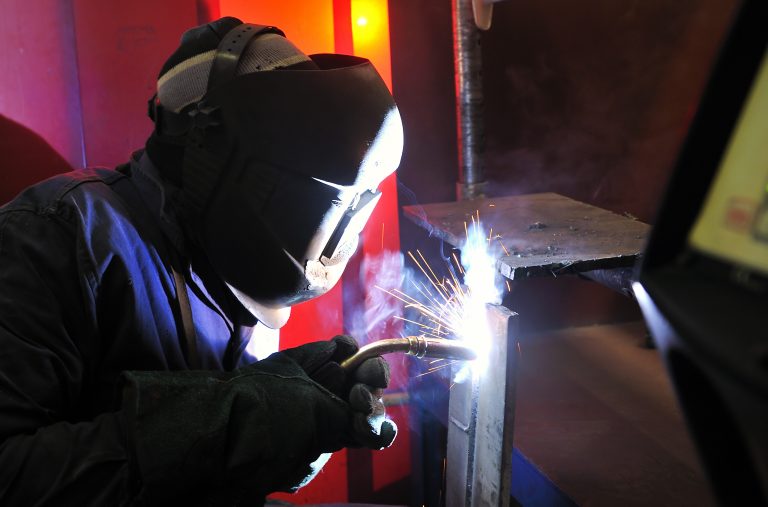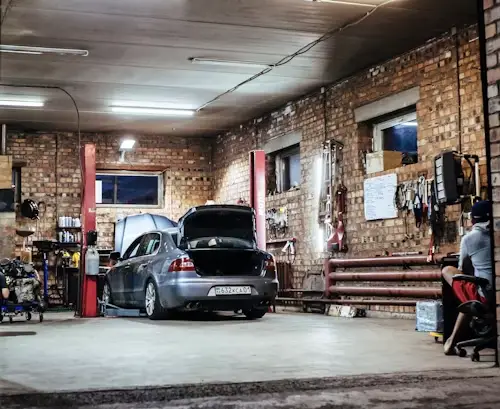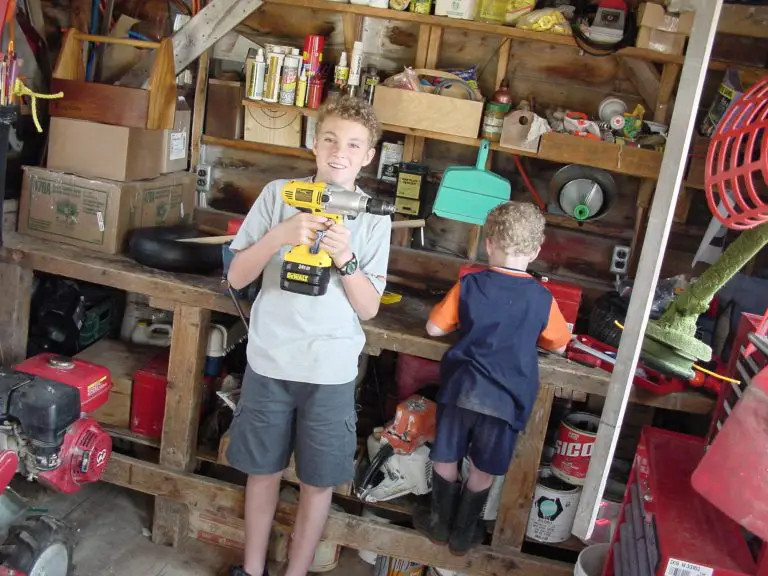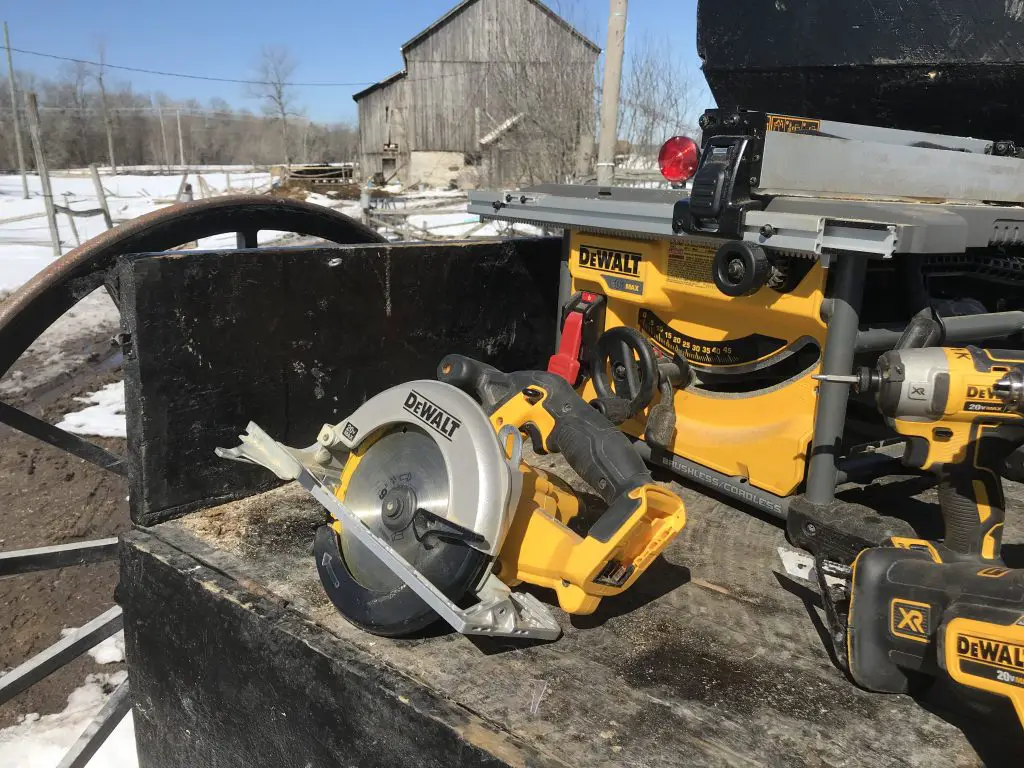
Cordless tools have been at the leading edge of the building scene for decades, but not everyone who embraces cordless tools are leading edge people. Take the Amish for instance.
The Amish call themselves “the plain people” and it’s easy to see wht. They dress in simple, 18th century clothing, choose not to own motor vehicles, reject almost everything with rubber tires, and don’t connect to the electrical grid. And yet, the Amish I know have happily used professional-grade cordless tools ever since they became available in the mid-1980s. In fact, these tools are a big part of the Amish building scene where I live. Is this an inconsistency?
Over the last 10+ years Amish families have begun to move to my quiet corner of Manitoulin Island, Canada and I’m glad to see them. One thing I’ve learned is how modern cordless tools fit into the Amish way of living. I was surprised by this until I came to understand why.

A Line in the Sand
The Amish are bible-believing Christians who trace their roots back to Jakob Amman in the late 1600s. They’re among the few people in the world who take a cautious view of technology because of the possible negative side effects specific technologies can have on faith, family and community. While it’s natural to think that the horse-drawn lifestyle of the Amish is all about being environmentally green, that’s not their main motivation at all. Each Amish community decides together about the modern conveniences they allow or reject. And how do individual groups of elders decide? By asking a simple question: “How will this technology affect our community and our faith life?”
While Amish households generally do have a land line telephone, for instance, it’s not in the house. The Amish way is to put the phone in a little building some distance from the house. Why? The same reason they choose not to connect to the electrical grid, though they still use electricity. One way to make use of a technology without having it dominate your heart and mind is to make it less convenient. Wasting aimless hours on the phone is less enticing if that phone is in a little, dark unheated building 50 yards from the house.
The Amish understand that while we humans create and shape technology, technology inevitably returns the favour by shaping us ever-after. The Amish are people who choose technology based on more than just how well it works in the short term. And as far as the communities where I live are concerned, cordless tools are on the side of the line they accept.
Meeting David & Miriam
When I first learned that an Amish couple – David and Miriam Kuepfer – had moved to a farm a few miles from my place, I decided to give them a handsaw as a house-warming present. I never thought for a moment that they’d use power tools of any kind, but I’d learn differently soon enough. The saw I handed David was a nice, new Irwin model – the kind with those super-sharp, hard-point teeth. When I arrived at their farm that day it was like I’d stepped back in time. When David and his wife Miriam came out of the house to meet me, they spoke English with an old German accent and wore simple, hand-made clothes that showed a lot of skill in the making.
I learned later that David works at carpentry, building things probably as much as he works with the cattle and horses he keeps on his farm. A few visits later I also noticed the well-worn DEWALT cordless tools he had. Eventually I came to understand that it was not electricity the Amish reject, but rather easy access to vast quantities of electricity from the grid. Lots of convenient power like this is the kind of thing that only the grid can provide, and I have to admit that it does change the way people spend their time and interact with each other.
David’s Cordless Tool History
“My dad bought his first cordless tools when I was still in grade school in the mid-1980s”, David explained to me. “Dad’s first tool was a Makita 7.2 volt drill – one of the first cordless tools available. From there we’ve basically stayed with DEWALT the whole time. We upgraded to 12 volt tools, then 36 volts when we did a lot of metal work on horse-drawn farm equipment. When I married in 2007, I bought an 18 volt drill, circ saw, recip saw, angle grinder and an impact driver. After 11 years of hard use, the only repair I had to do was change a bearing in the circ saw. We did burn out a drill, but only after a lot of hard work in steel. Those DEWALT XRP tools held up really well.” These days David is using 20 volt and 60 volt DEWALT FLEXVOLT equipment, including a cordless tablesaw – the first he’s ever owned.
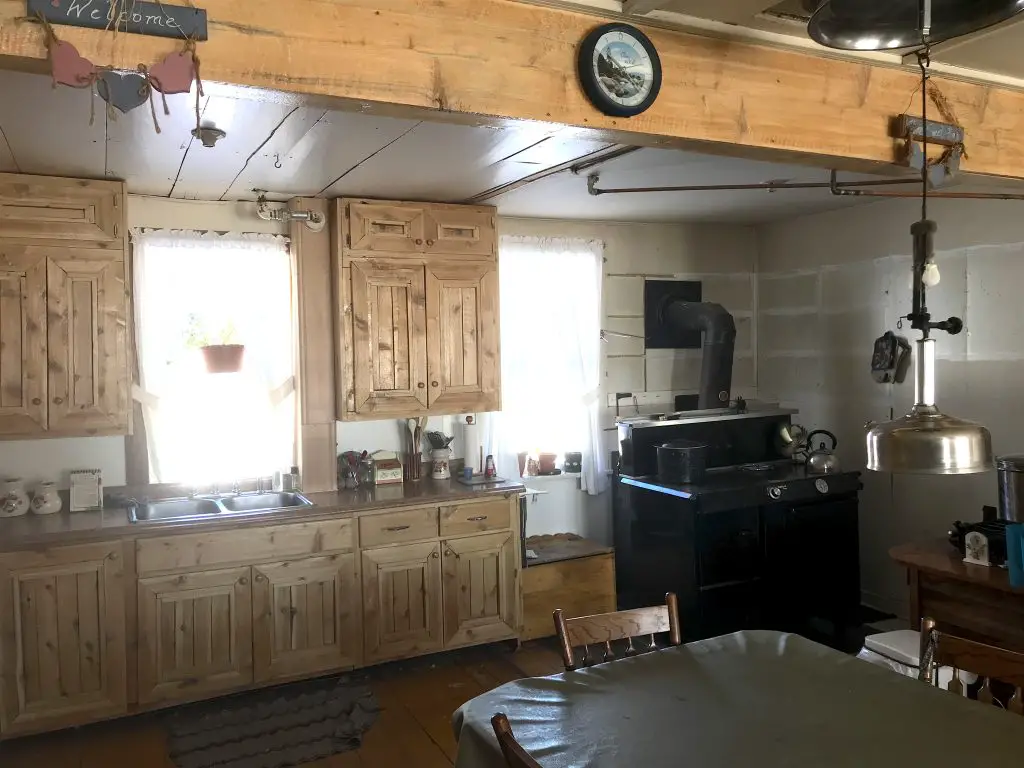
The Amish greatly value humility and that’s the main reason they don’t allow personal photos to be taken. While I was taking photographs for this story, David made sure to be well out of the way. David’s not a particularly fine carpenter, but he’s a productive one. He builds sheds, furniture, repairs barns and does any other jobs involving wood and metal. He works mostly with lumber he cuts on his own sawmill from the forest that’s part of his 200 acre farm. Lately David’s been building a bedroom set for sale and working on a kitchen renovation, complete with site-built cabinets made entirely with the cordless tools he depends on to earn his living. That’s the kitchen he built above.
The Amish don’t use much electric power, but they always produce the electricity they need using technology that’s not connected to the grid. David and Miriam have solar power, but they do charge the batteries in their lives happens with a simple home-made 12-volt system cobbled together from an old automotive alternator. It’s crude but effective. A 5hp Honda utility engine drives a V-belt connected to the alternator as it sits bolted to a wooden base.
Click on the short video below to see this simple setup my Amish friends use to make electricity. They use it to charge the 12 volt automotive battery they use to power the running lights on their horse-drawn road buggy and to power an inverter for charging cordless tool batteries. It’s a rough little machine, but it works!








